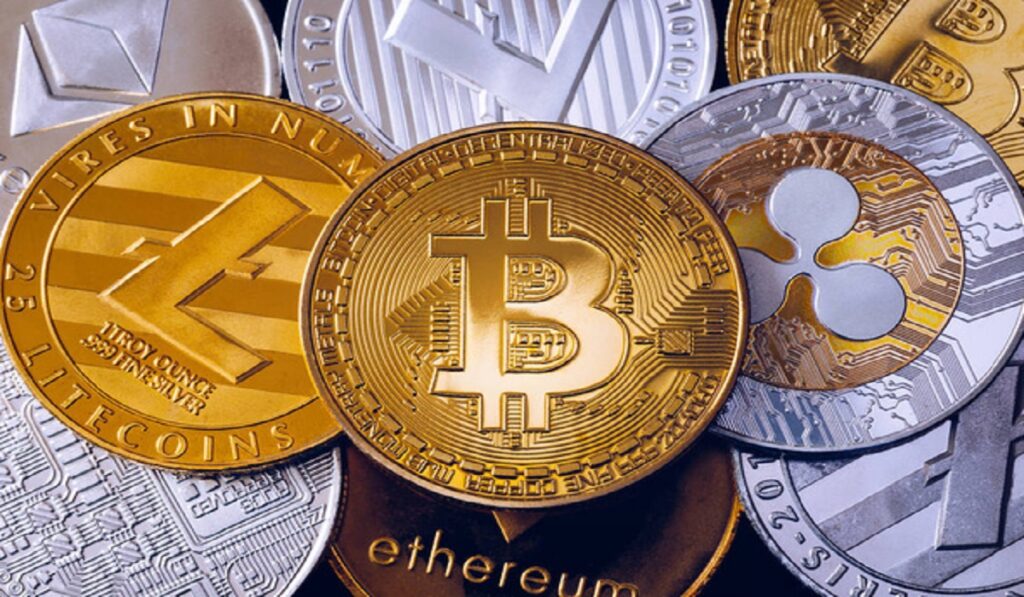Are Stablecoins the doping the cryptocurrency market is looking for?

Stablecoins have emerged as an exciting development in cryptocurrency, promising to address some of the inherent volatility and usability challenges associated with traditional cryptocurrencies like Bitcoin and Ethereum. In this article we take an in-depth look into their concept as well as general and technical details pertaining to them, before exploring whether stablecoins might provide the ultimate answer for cryptocurrency problems.
- Stablecoins provide an approach for cryptocurrency holders looking for stable value to establish stablecoins as an asset class that seeks to secure this goal through collateralization or algorithmic controls; or both mechanisms in combination. This type of cryptocurrency typically features in reserve portfolios. Stablecoins exist as an additional layer between fiat currencies like U.S. dollars and commodities like gold in terms of keeping their worth stable over time. This stability may be achieved via various mechanisms including collateralization or algorithmic controls or both approaches combined.
- Stablecoins Aim at Reducing Volatility: Stablecoins are designed to combat the extreme price volatility associated with cryptocurrency markets by anchoring their value against an asset such as gold. By creating more stablecoins that provide users with a reliable medium of exchange, store of value, and unit of account in cryptocurrency ecosystem.
- Use Cases and Benefits: Stablecoins offer multiple use cases and benefits within the cryptocurrency space, including offering protection from market fluctuations while simultaneously making transactions seamless and faster while increasing access for everyday users. Furthermore, stablecoins serve as an intermediary between traditional financial systems and blockchain environments by helping facilitate integration and adoption processes.
- Types of Stablecoins: Stablecoins can be divided into three main groups depending on their underlying mechanisms: fiat-collateralized stablecoins, crypto-collateralized stablecoins and algorithmic stablecoins. Each category brings with it different advantages, challenges and considerations regarding stability, scalability and regulatory compliance that must be carefully considered when choosing one over the other.
- Fiat-Collateralized Stablecoins: Fiat-collateralized stablecoins are supported by reserves of traditional fiat currencies held with trusted custodians, with an aim to achieve 1:1 ratio with their underlying assets such as Tether (USDT), USD Coin (USDC) or TrueUSD (TUSD). Unfortunately, concerns around transparency and audits have cast doubt upon some fiat-collateralized stablecoins’ credibility and stability.
- Crypto-Collateralized Stablecoins: Crypto-collateralized stablecoins are digital currencies backed by other cryptocurrency assets as collateral, using smart contracts and overcollateralization techniques in order to stay stable – such as Dai (DAI). While crypto-collateralized stablecoins offer decentralization benefits, their price fluctuations still can affect them directly.
- Algorithmic Stablecoins: Algorithmic stablecoins use complex algorithms and smart contracts to maintain stability without direct collateral backing, dynamically adjusting supply based on market demand and algorithmic rules. Ampleforth (AMPL) and Empty Set Dollar (ESD) are examples of algorithmic stablecoins with these characteristics, but these mechanisms may encounter challenges related to scaleability, liquidity or external market factors which impede their functionality.
Stablecoins have effectively addressed significant pain points within the cryptocurrency ecosystem, specifically volatility and usability issues. By offering greater stability and accessibility than their cryptocurrency peers, stablecoins offer individuals and businesses alike an easier, more practical means of engaging with cryptocurrency assets. Yet stablecoins alone cannot solve every cryptocurrency-related ill.

Stablecoins may bring stability to their holders but also present new challenges: regulatory compliance, reserve transparency and governance are critical aspects to consider before adopting one as part of an investment portfolio. Furthermore, depending on centralized entities for collateralized fiat stablecoins raises questions of counterparty risk and trust issues.
Furthermore, stablecoins do not fully eliminate volatility; some algorithms could still contribute to it.
Stablecoins may still be subject to external market factors and liquidity considerations; in particular, algorithmic stablecoins present unique challenges related to their scalability and the efficacy of their stabilisation mechanisms.
Noteworthy is also that stablecoins exist within a wider cryptocurrency ecosystem that still faces issues regarding scalability, security and regulatory uncertainties – while stablecoins provide more stable value propositions they do not inherently solve these core challenges.
Additionally, the concept of stablecoin can be subjective; while these stablecoins aim to maintain an asset with relatively consistent values over time, fluctuations or shifts in market dynamics could still impact their stability – it’s crucial that users fully comprehend all associated mechanisms and risks before turning them into solutions to cryptocurrency-related issues.
Stablecoins have proven an essential addition to the cryptocurrency landscape, providing stability and usability advantages over traditional cryptocurrencies. Stablecoins address volatility by creating more predictable mediums of exchange and stores of value; they address volatility issues more efficiently while acting as more predictable mediums of exchange and stores of value. It should be remembered, though, that stablecoins don’t solve all cryptocurrency related problems on their own; rather they introduce their own set of challenges such as regulatory restrictions, transparency concerns and governance concerns that must also be dealt with comprehensively to effectively deal with them all as a holistic ecosystem as whole.
What are the five most widely held stablecoins?
- Tether (USDT): Tether is one of the first and most-popular stablecoins issued by Tether Limited and claims to be backed by reserves of traditional fiat currencies like dollars; USDT can be found across different blockchain platforms including Ethereum and Tron.
- USD Coin (USDC): Established jointly by Circle and Coinbase, USDC is an ERC-20 token built on Ethereum that seeks to maintain an 1:1 relationship between USDC and U.S. dollar values. Over time it has seen wide adoption, becoming used across both decentralized finance (DeFi) platforms as well as cryptocurrency exchanges.
- Dai (DAI): Dai is a decentralized stablecoin created by MakerDAO, a decentralized autonomous organization (DAO) on Ethereum blockchain. Unlike many other stablecoins, Dai does not directly correlate to fiat currencies – instead maintaining its stability via overcollateralization and dynamic adjustments according to supply and demand conditions.
- Binance USD (BUSD): Binance USD is an Ethereum and Binance Chain-backed stablecoin launched by one of the leading cryptocurrency exchanges – one which promises 1:1 backing by U.S dollars held as reserves in reserves. BUSD offers users with a secure digital asset which has wide acceptance.
- TrueUSD (TUSD): TrueUSD is issued by TrustToken with an aim to increase transparency and trust by conducting regular audits of its reserves. Built on Ethereum blockchain technology and operating to maintain 1:1 value with US dollar.
Note that stablecoin popularity and rankings could change since my last update. With new projects and developments emerging constantly, it is wise to refer back to market data to identify which stablecoins have become most sought after at present.






